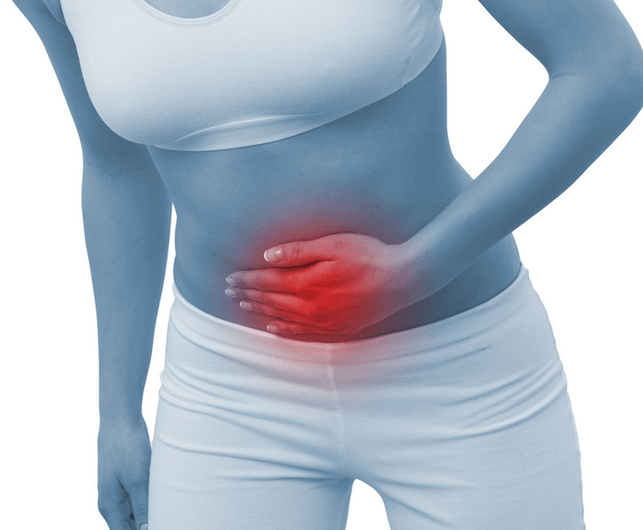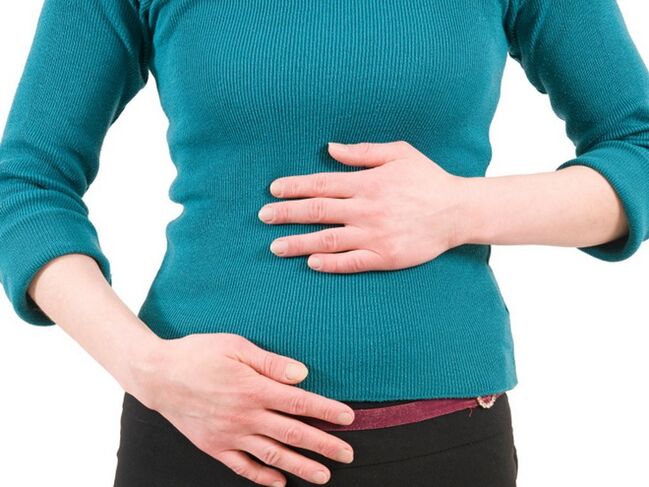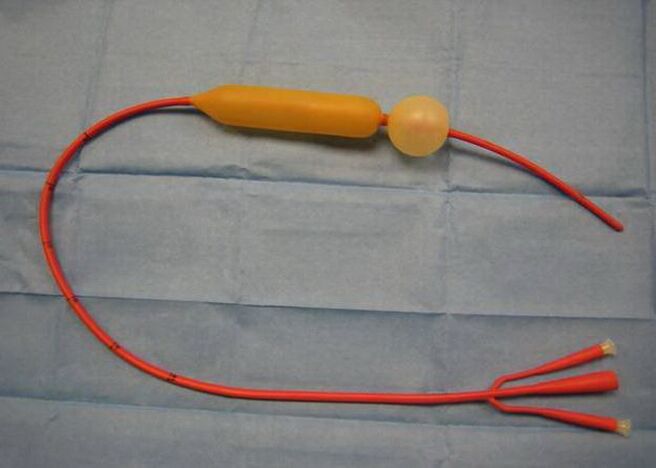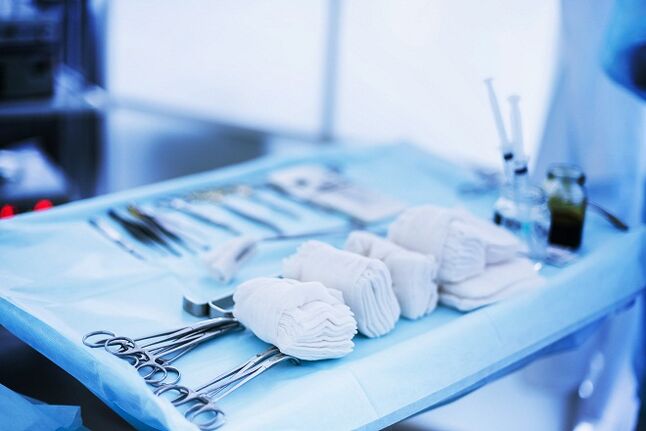Diseases of veins and large blood vessels are accompanied by significant changes in their physical condition, which negatively affects the quality of the blood circulation process. And varicose veins of the esophagus, which can significantly reduce the quality of life of patients due to the deterioration of the quality of digestion and blood flow in the body, require careful attention to themselves and timely start of treatment. This pathology may be accompanied by the addition of secondary lesions of the digestive system, or it may arise and continue on its own.
However, for any type of appearance, varicose veins of the esophagus and subsequent varicose veins that occur are accompanied by unpleasant symptoms that allow the identification of the lesion in the initial stage of development and rapid initiation of therapeutic effect, preventing complications. . Medical statistics state that this pathology of the esophageal veins occurs mainly in the male population (women suffer from varicose veins of the esophagus twice less often than men), while the average age at which the first manifestations of the disease can be observed is 50 years. -55 years.
Causes of disease
The reasons that cause the appearance of varicose veins of the esophagus can be different depending on the manifestation of the disease, the general condition of the patient's body, in each case the set of reasons may differ. However, in any case, varicose veins, which occur in the veins of the digestive organs, become a consequence of changes in the general condition of the veins. The reason for the appearance of varicose veins of such localization is excessively high blood pressure in the venous part of the bloodstream, which is most often characteristic of liver cirrhosis.
And the result of their spread can be massive bleeding, the danger of which lies in the absence of symptoms, which can be considered a warning: bleeding with varicose veins of the esophagus is often abundant, which is a real danger to the general condition. patient. Therefore, knowledge of the manifestation of this pathology of the esophageal veins and measures for the prevention of the disease will enable a faster diagnosis and begin an adequate therapeutic effect.
Also, the following patient conditions may be the causes of this pathological change in the veins of the digestive organs:
- congestion observed in the portal vein;
- portal thrombosis;
- development of malignant goiter;
- esophageal angioma.
Also, the occurrence of the subject lesion may be caused by symptoms and vascular pathologies that accompany Randu-Osler disease. All these diseases and conditions are accompanied by negative changes in the vascular system and digestive organs, which initially affect the general condition of the veins and large arteries of the esophagus and stomach tissue. Changes in the circulatory system of internal organs such as the liver, spleen, gallbladder can cause the development of varicose changes in the esophagus.
Patient symptoms
The main manifestation of a condition such as varicose veins in the esophagus is bleeding. This symptom can be noticed in the absence of warning manifestations, against the background of so-called "full health". A sign of impending bleeding can be considered a slight tickling in the throat, a characteristic taste of blood when swallowed (salty-sour). Blood that occurs during bleeding during the development of varicose veins is usually pronounced light crimson, it may resemble coffee grounds. The result of such bleeding, which is often prolonged and profuse, is dizziness, feeling weak, loss of consciousness.

Since the causes of worsening varicose veins can be various lesions of internal organs and the circulatory system as a whole, the overall quality of functioning of these organs is largely determined by the likelihood of developing varicose veins and symptoms that may accompany this lesion.
Bleeding, which develops during the asymptomatic course of the initial manifestations of the disease, can be considered a symptom of the considered pathological change in the digestive organs. Such bleeding may be insignificant, which does not immediately attract the patient's attention, or heavy, which have a high risk of death. Varicose veins, which are recorded in the tissues of the esophagus and stomach, are most often characterized by the absence of any significant changes that allow timely detection and treatment. However, this disease is one of the most terrible: with unexpected bleeding, which is characterized by an abundance of blood, there is a high probability of death for the patient. According to medical statistics, out of five cases of manifestation and worsening of varicose veins in the digestive organs, four are the death of the patient.
Types and degrees of varicose esophagus
Today, experts distinguish several stages of development of varicose veins of the esophagus, each of which has its own characteristics of development, differs in the list of manifestations and requires a certain therapeutic effect, which prevents further exacerbation of pathology. Thanks to modern diagnostic methods, it becomes possible to determine the presence of the disease, its stage and stage of development.

There are the following stages of varicose veins and varicose veins:
- first degree, in which there is a slight change in the lumen of the veins of the body. Varicose veins of the esophagus, characteristic of grade 1, the patient may not notice, because he rarely has clear and pronounced symptoms. The veins of the esophagus have an average lumen of 5 mm, which does not differ much from their healthy condition. However, even at this size, they become less elastic, because even small changes in their lumen lead to a certain reduction in the intensity of blood flow through them, and the overall quality of blood circulation in the affected organ is impaired. Grade 1 varicose veins can be detected by routine examination of this organ;
- the second stage is characterized by an increase in the lumen of the veins in the diseased organ up to 10 mm, the speed of blood flow through the veins gradually decreases, which negatively affects the condition of the veins: they continue to lose elasticity, the walls gradually become thinner;
- in the third phase of worsening pathology, the lumen of the veins in the esophagus and stomach dilate by more than 10 mm, the blood vessels are close to each other due to their expansion, and even slightly. trauma can cause bleeding. Often, in the third phase of the disease, heavy bleeding is noticed, which causes the death of the patient, which is a real danger to the life of a sick person who suffers from varicose veins in the tissues of the digestive organs. .
The mentioned classification of varicose veins of the esophagus allows us to classify the existing lesion of the veins of this organ to a certain extent and start treatment, which has a positive effect on the patient's condition. Treatment of varicose veins of the esophagus should be chosen by a doctor who, based on studies and analysis of the patient's general condition, chooses the scheme of exposure and variant of exposure, taking into account the characteristics of his organism.
Varicose veins of the stomach
Varicose veins, due to a negative change in their condition, can also be noticed in the stomach. In this case, just as in the case of varicose veins of the esophagus, there is a gradual decrease in the degree of elasticity of the vein walls, the appearance of a significant probability of bleeding. Modern diagnostic methods make it possible to detect the pathology in time and start its treatment.
Methods of treating varicose veins, which are localized in the tissues of the stomach, differ, but all are aimed at eliminating the root cause of this condition. The National Center for Chemistry of the Russian Academy of Medical Sciences provides the following information on the causes and methods of treatment of varicose veins and esophagus and stomach:
- treatment of manifestations of varicose veins in the esophagus and stomach according to the method described in the book of leading experts in gastroenterology, differentiation of established diseases of the digestive system, and this technique and a detailed description of the manifestations of this disease. rare lesions as pathologies of the operated esophagus, difficult to diagnose diseases of the digestive organs provides the greatest amount of information needed to develop a scheme of therapeutic effects for both therapists and for specialist gastroenterologists;
- Zdenek Marzhatka, one of the most prominent specialists in the field of gastroenterology and esophageal diseases, accompanied by damage to the veins in his tissues, describes in detail in his writings various methods of diagnosing diseases, types of endoscopy of esophageal tissues. stomach and esophagus.

Today, in order to prevent further deterioration of the existing pathology, more and more modern diagnostic methods are used, aimed at a more detailed study of the condition of the tissues of the affected digestive organs.
Diagnosis of the disease
Methods and options for diagnosing varicose veins that have arisen in the digestive organs (esophagus and stomach) include the following manipulations and diagnostic procedures:
- Fibroesophagoscopy, which allows you to identify the cause of bleeding. Also, this method allows you to determine the presence of mechanical causes for the occurrence of bleeding, the condition of the walls of the esophageal veins.
- X-ray of the esophageal walls, which is more informative when contrast is used.
Both options for diagnosing the disease in question have the ability to detect the cause of bleeding, determine the condition of the vein walls, and the likelihood of rupture of existing aneurysms. Using both diagnostic options allows, with maximum accuracy, not only to detect pathology of the veins and blood vessels of the esophagus and stomach, but also to obtain the largest amount of available information about the pathology.
Possible complications
Since varicose veins that occur in the tissues of the esophagus and stomach are especially dangerous due to the likelihood of bleeding, it is necessary to consider the possible complications of this pathology. Significant damage to the digestive organs, worsening of liver cirrhosis are the most dangerous consequences of this venous pathology.
Methods of treatment
The therapeutic effect to eliminate the risk of bleeding in case of damage to the veins of the esophagus and stomach should take into account the stage of the pathological process, the general health of the patient, the sensitivity of his body to the current therapeutic effect. Modern medicine is constantly improving the methods of influencing the veins of the esophagus, which allows you to quickly remove the most obvious manifestations of the pathology.
Today, an integrated approach is used in the treatment of the considered pathology of the esophageal and gastric veins, which consists of traditional, surgical and medical methods of exposure. Each method has its own characteristics, can be used for certain indications and is prescribed by a doctor. The course of treatment should be monitored at all stages by a doctor who will, if necessary, make the necessary adjustments in a timely manner and prevent possible risks of complications.
traditional method
First of all, when the traditional option of treating varicose veins of the esophagus is used, the bleeding stops, which can be fatal. This will allow additional methods of therapeutic action, which will ensure faster regeneration of damaged tissues and create the necessary scar at the site of esophageal vein injury.
In order to compensate for hypovolemia and prevent hemorrhagic shock, a significant (calculated by the doctor) dose of vitamin K is introduced into the patient's body, as well as frozen plasma infusions (1-2 doses, intravenous transfusion).
Conservative method
In case of heavy bleeding, which becomes a real danger to the patient's life, a rubber balloon can be used to quickly stop the bleeding. With the help of a probe, the bleeding is suppressed, which stops the movement of blood. For example, the probe of such a device - Sengstaken-Blackmore probe is popular in removing bleeding during the development of varicose veins in the digestive organs, especially in the esophagus. Wave variants of such probes are also used, which are widely used in the treatment of varicose veins of the esophagus with bleeding and bleeding stomach ulcers.

By inserting a probe below the site of the vein rupture, the esophagus can be flushed with warm water at a temperature of 40 ° C - this measure often stops active bleeding and stabilizes the patient's condition. However, in case of repeated bleeding and their high intensity, in parallel with the use of probes, intravenous and intramuscular administration of substances that also contribute to blood stasis is recommended. Calcium chloride 10-20 ml is given intravenously. Do not use for the introduction of drugs whose action is aimed at increasing blood pressure.
Endoscope treatment
Since this disease of the esophageal vein is most often diagnosed by endoscopic examination, endoscopic hemostasis can be prescribed in order to eliminate the most characteristic manifestations of the lesion (elimination of bleeding). This method involves suturing the affected areas of the veins in the esophagus, and this variant of the therapeutic effect is more desirable than injection sclerotherapy due to the more pronounced positive dynamics of treatment.
Performing endoscopic treatment is characterized by rapid cessation of bleeding, prevention of probable recurrence of the disease. The drug, used in the implementation of endoscopic treatment of bleeding in varicose veins of the esophagus and stomach, is administered intravenously at a dose of 50 mcg, its action is aimed at increasing visceral vascular resistance, which stabilizes the patient, preventing excessive blood loss. . This drug has an advantage over other drugs that can be given to stop venous bleeding from the esophagus because it has fewer side effects, even with long-term use.
The use of an endoscope implies the use of a special endoscopic examination of the esophagus, which is most often prescribed for bleeding whose cause is unclear. This technique is very popular due to the high efficiency of this diagnostic method and the good positive dynamics of treatment (ligation is performed), which is performed with an endoscope. Endoscopic examination of the veins of the esophagus and stomach proved to be good at any stage of the development of the pathological process; Also, this method enables the detection of even the initial manifestations of diseases of the digestive system in relation to the blood circulation in the veins and the identification of varicose veins of the esophagus.
Use balloon tamponade
The endoscopic method of exposure includes the use of such a variant of stopping bleeding from the esophageal veins, such as balloon tamponade. It consists of the impact on the site of vein damage of special clogging agents. However, with heavy bleeding, balloon tamponade may not be effective, it is necessary to use additional drugs to stimulate regenerative processes in the tissues of the vein walls.
The classification proposed today for the division of varicose veins of the esophagus and allows you to determine the most effective scheme of therapeutic effects. Taking into account the specifics of the stage of the current pathological process, the organism's perception of the used drugs and the control of the current therapy, provides the attending physician with the possibility of timely adjustment and achieving the best results in stopping bleeding and stabilizing bleeding. the patient's condition.
Surgical intervention
Heavy bleeding, which is life-threatening for the patient due to significant blood loss, may require surgery.
Surgery may be prescribed for large blood losses, in which intravenous administration of plasma, blood and blood-replacing fluids does not give a pronounced positive result. There are several types of surgery for significant blood loss. Each of them is prescribed according to the indications determined by the doctor.
Today, the following types of surgery are recognized as the most effective:
- imposing a special bandage made of medical rubber. Such ligation of damaged veins allows you to quickly stop blood circulation, stop blood loss, which can cause significant deterioration of the patient's condition;
- bypass surgery reduces blood pressure in the veins and stops bleeding as a result. During the shunting, the liver tissue is affected, a special stent is inserted in the middle of this organ, which creates a kind of bridge between the liver tissue and the esophageal tissue, which lowers blood pressure. Hepatic and portal veins, which have such a "bridge", receive reduced pressure, which leads to the cessation of bleeding;
- Splenorenal shunting is a type of bypass that helps prevent possible bleeding when varicose veins are detected in the tissues of the esophagus and stomach.

These surgical options allow you to eliminate high blood pressure in the veins of the esophagus damaged by varicose veins. They are all performed under X-ray control and provide the greatest positive effect from manipulations to stop bleeding.
Medical treatment of varicose veins
There is also a variant of the healing effect on the organism in order to treat the initial phase of varicose veins of the esophagus. The choice of drug type is determined by the physician after examination of the patient's body, determining the stage of the current pathological process. When conducting this type of therapy should take into account indicators such as sensitivity of the patient's body to the drug used, the likelihood of developing allergic reactions.
The following drugs with a pronounced effect on the veins are most often used in the treatment of this disease:
These drugs have a number of possible side effects that should be considered when prescribing.
Treatment with folk remedies
The reliability of drugs and methods of traditional medicine has been tested for centuries, but its effectiveness is not high enough to cope on its own with the manifestations of varicose veins of the esophagus. Traditional medicine can be used as a maintenance medicine, to increase the speed of the recovery process in the tissues of the veins. For example, with a high probability of bleeding, it is recommended to take decoctions and infusions of plants that have a hemostatic effect. These can be collections of nettles, thyme, mountain birds.
Treatment with folk remedies is also possible at home, which is especially important for the maintenance of the disease, in remission. Since varicose veins of the esophagus are a serious lesion, which poses a serious threat to the health and life of the patient, it is necessary to take into account the degree of influence of the chosen traditional medicine. Treatment at home is carried out under the constant supervision of a doctor.
Do you need a diet
When diagnosing varicose veins in the digestive organs, the question of diet choice should be considered one of the most important, because the food that enters the patient's body largely depends on his well-being and indicators of ongoing therapeutic effect. . The diet recommended for varicose veins of the esophagus implies compliance with several feasible rules, which include the exclusion of certain foods and the inclusion in the daily menu of certain products that treat the body as a whole, especially the esophagus.

The diet for varicose veins of the esophagus should exclude the following foods and substances from the patient's diet:
- spices;
- a large amount of table salt;
- excessive amounts of oil, especially of animal origin;
- fried, canned, smoked foods, which will irritate esophageal tissues and cause bleeding.
The diet for varicose veins of the esophagus, as well as for cirrhosis of the liver, should include more cooked, stewed foods, fermented dairy products will perfectly support the necessary microflora in the intestines, without creating too much burden on the digestive system. whole. Fractional diet in small portions, control of calorie count to prevent excessive effects on the digestive system will prevent exacerbation of existing pathology and maintain esophageal health.
Disease prevention methods
As a preventative measure for varicose veins, it is necessary to exclude bad habits, including smoking, drinking alcohol, fast food, fast food.
Regular examinations by a gastroenterologist will help identify venous diseases even in the initial phase of pathology development and begin its treatment.
A healthy lifestyle
Maintaining a healthy lifestyle should be a must for those who want to maintain a healthy digestive system.
Prevention of venous diseases, use of vitamin preparations to maintain high levels of immunity, doctor's examinations are important components of success.
Physical exercises
In order to maintain the tone of the veins, to maintain the good functioning of the digestive system, you should regularly perform the necessary minimum of physical exercises.
Walking, jogging, exercise therapy exercises can be considered as good preventive measures in the development of varicose veins.























